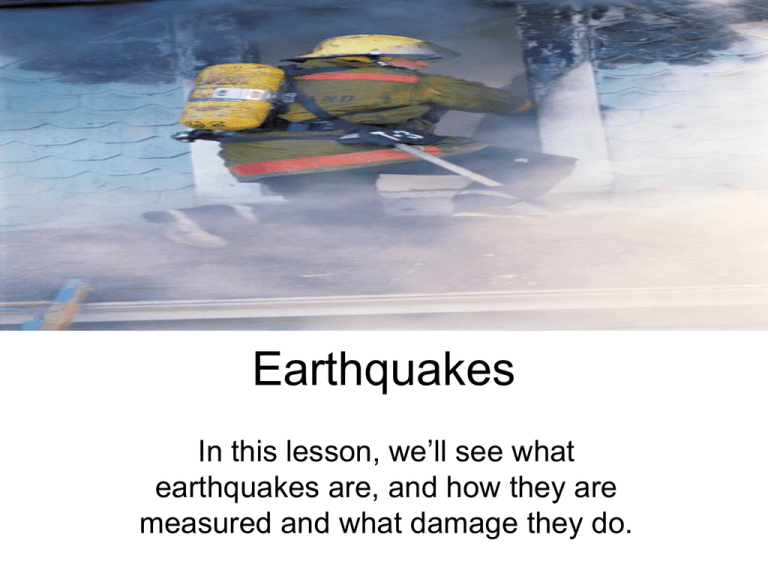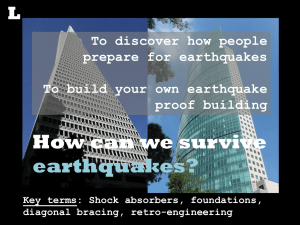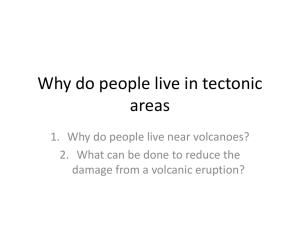Earthquakes - West Monmouth School
advertisement

Earthquakes In this lesson, we’ll see what earthquakes are, and how they are measured and what damage they do. Before we go any further, let’s just recap what we’ve done so far. Any sudden large rock movement will cause an earthquake. That’s why there are so many earthquakes along plate edges. But even the collapse of an old mine shaft, or an underground explosion, can cause a small earthquake. How big? •Earthquakes are measured using machines called seismometers, which record the shaking as waves on a graph. •From the graph, scientists can tell how much energy the earthquake gave out. •The amount of energy an earthquake gives out is called its magnitude. •We show it on the Richter scale. •An increase of 1 on this scale means the shaking is 10 times greater, and about 30 times more energy is given out. (And that means a lot more damage!) 1. Explain in your own words what these earthquake terms mean. a. seismic waves b. focus d. magnitude e. seismometer c. epicentre 2. Look again at the photo. Imagine you are one of the people in the photo. Describe what you see around you in 100 words. 3. Look at the diagram below. a. Will the shaking be stronger at A or B? Explain. b. Will the damage be greater at A or B? Explain. c. Will an earthquake of magnitude 7 do more damage than this one or less? Why? d. About how many times more energy will an earthquake of magnitude 7 give out, than this one? e. An earthquake can occur at any time of day. When might an earthquake do more harm at B? i) at 5am ii) at 10:30am. Why? 4. The largest earthquake ever recorded was in 1960, in the ocean off the coast of Chile. It measured 9.5 on the Richter scale. a. It left 2 million people homeless in Chile. Explain how it managed to do that. b. 22 hours later, it caused 200 people to drown on the east coast of Japan. How did it do that?











